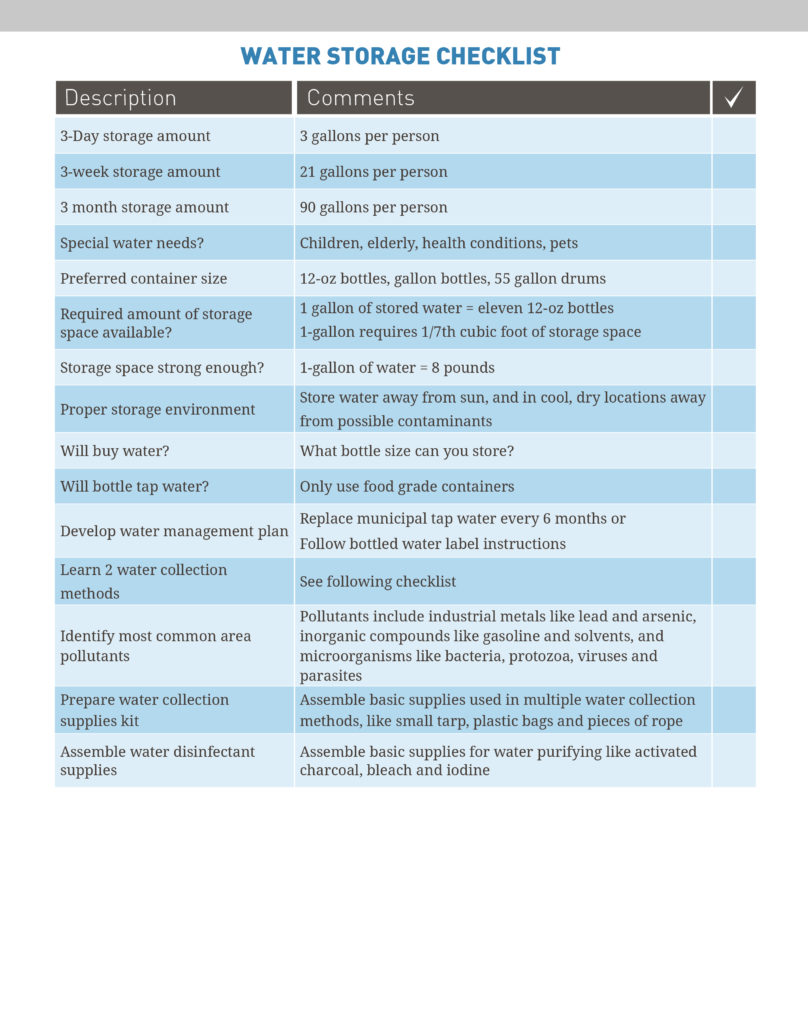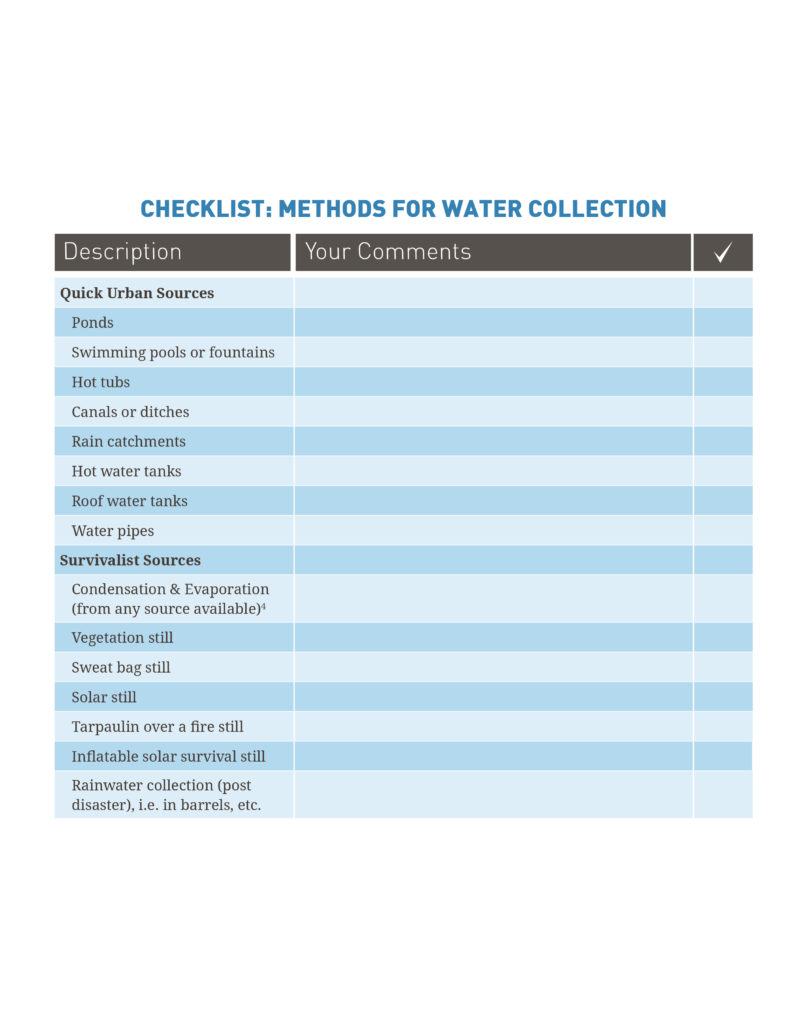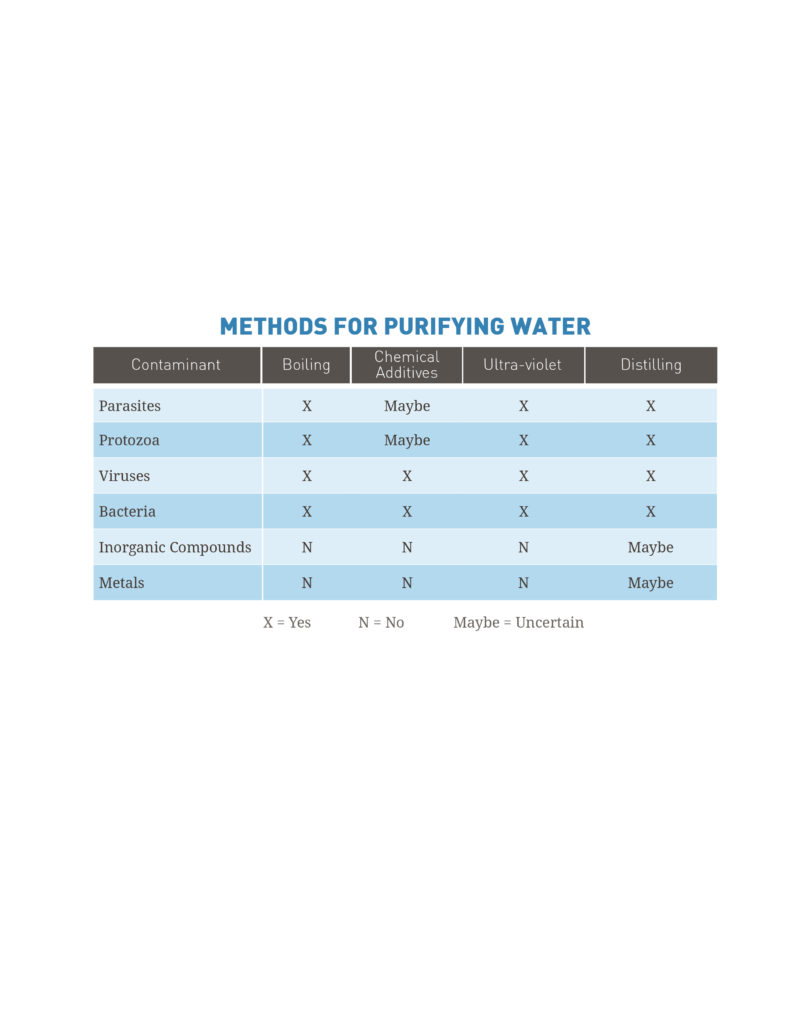WATER
Water is an excellent starting point because you can only survive for a few days without it. The harsh truth is that everything else becomes irrelevant if you die from lack of water. In fact, dehydration can cause physical problems, like vomiting and muscle cramps, and mental problems, like fuzzy short-term memory and an inability to do even basic math.
Since we are used to having clean water available any time, day or night, directly from our faucet, it’s difficult to imagine a water treatment plant failing, being knocked out by a storm or cyber attack, or forced to shut down due to water contamination.
However, all of these events have happened.
The first question is: How much water should be stored? The answer, of course, depends on whether you are planning for a three day, three weeks, or three month disaster period. However, if you store for a three day emergency event, it is important to have developed water collection skills for longer survival events. The same holds true for three weeks or three months. What will you drink the fourth week or fourth month?
The Federal Emergency Management Agency (FEMA) recommends storing at least two weeks of water.
As a guide, you can plan on needing a minimum of:
- One-half gallon of water per person, per day for drinking purposes only
Or
- One gallon of water per person, per day, with half for drinking purposes and the other half for hygiene practices like teeth brushing
There are several checklists or charts here to guide you. The first checklist identifies the various considerations associated with water storage for disaster planning. The second checklist identifies the various sources of water you can turn to should the municipal water supply fail and you run out of stored water.
The third chart is a guide to different methods of water purification. Fortunately, there are many ways to collect water, and you need to learn as many as possible so you have options to choose from based on the situation. Water collection and purification methods are one case in which redundancy is the best thing you can have.
Stored water is a finite resource and should you run out before life gets back to normal, it is vital to know how to collect and disinfect water from any source available. The following chart lists the various methods for finding and collecting water. Use the list to identify the best options for your area and then spend time learning and practicing the techniques. Of course, it is critical to master several appropriate methods so you have options. For example, you may want to know how to recycle rainwater and how to make a ground still.
The checklist can be used like an inventory sheet. For example, if you have a pond or canal close to your home, then check it off the list and make sure you learn how to disinfect the water should you have to drink it.
Water Storage Checklist

CHECKLIST: METHODS FOR WATER COLLECTION

Since this is a discussion on survival, it should be mentioned that drinking purified urine is another water source. However, this is a last-ditch desperation tactic to be used only when there are no other water alternatives and your life is threatened by dehydration. Urine should not be consumed more than three (3) times, and you don’t want to drink it early in the morning as it is more concentrated with body toxins at that time.
There are many sources of water, if you know how to extract water from the air, ground, or vegetation. Identifying the type of water sources you will rely on will ensure you also collect the right supplies and tools in your survival kits.
You can purchase portable filters, but it is important to understand what the filters are capable of removing. Also, be sure to learn a water collection technique that requires mostly skills and not supplies.
For example, a sweat bag still can collect water from vegetation, mud, or contaminated water and only requires a bag and natural materials like stones and sticks.
METHODS FOR PURIFYING WATER

One final note on water concerning disinfection or purifying. The well prepared prepper will know how to make safe drinking water with supplies and when unable to reach purifying supplies like bleach or iodine. Knowing more than one way to get what you need ensures a good outcome, and the best prepper is the thorough prepper.

